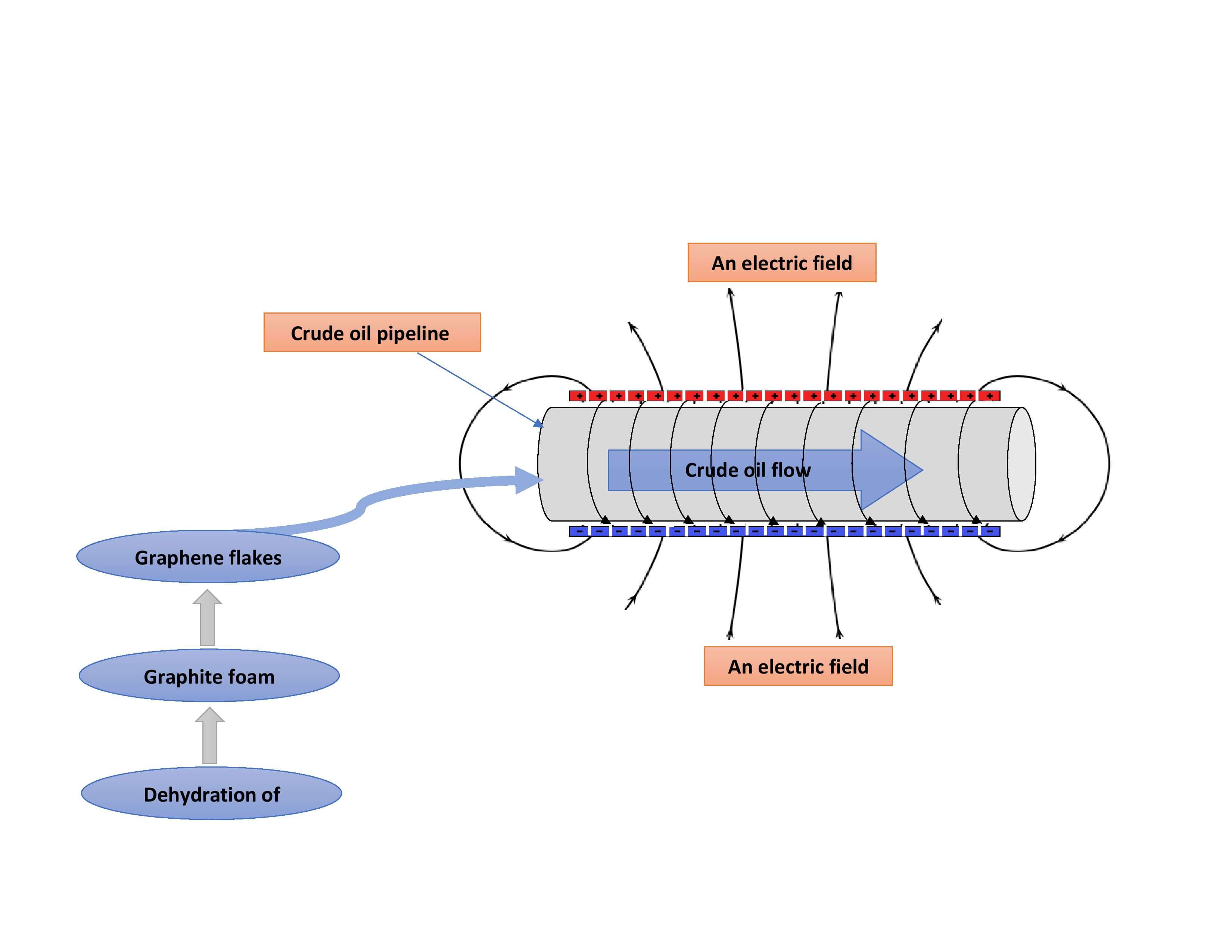 Open Access
Open Access
ARTICLE
Improving Crude Oil Flow Using Graphene Flakes under an Applied Electric Field
1 Environment Research Center, University of Technology-Iraq, Baghdad, Iraq
2 Chemical Engineering Department, University of Technology-Iraq, Baghdad, Iraq
3 Nanotechnology and Advanced Materials Research Center, University of Technology-Iraq, Baghdad, Iraq
4 Electromechanical Engineering Department, University of Technology-Iraq, Baghdad, Iraq
* Corresponding Author: Thaer Al-Jadir. Email:
(This article belongs to the Special Issue: Recent advancements in thermal fluid flow applications)
Fluid Dynamics & Materials Processing 2023, 19(8), 2067-2081. https://doi.org/10.32604/fdmp.2023.027156
Received 17 October 2022; Accepted 10 January 2023; Issue published 04 April 2023
Abstract
Graphene flakes (GF) have been prepared and assessed as a material for improving flow in oil pipelines under the effect of an electric field. In particular, different amounts of GFs have been considered in order to determine the optimal flow conditions. The GFs were prepared from graphite foam, derived from the dehydration of sugar with a particle size of 500–600 μm, which was dispersed in ethanol and exfoliated in a ball mill under a shear force. After 15 h of exfoliation, sonication, and subsequent high-speed centrifugation at 3000 rpm, irregular-shaped GFs of 50–140 nm were produced and characterized using scanning electron microscopy, X-ray diffractometry, atomic force microscopy, and Raman spectroscopy. The prepared graphene sheets have been found to display excellent morphology and good graphitic structure. Experiments on flow improvement were conducted using the central composite rotatable design method for three parameters: stimulation time (15, 30, 45, and 60 s), applied voltage (150, 170, 200, and 220 V), and concentration of the GFs (0, 100, 200, and 400 mg/L). The optimal conditions for improved crude oil flow were then determined using the STATISTICA and WinQSB software packages. The results have confirmed the effectiveness of the use of the prepared GFs as a flow improver for crude oil, where the flow improvement is essentially a result of a reduction in viscosity and suppression of friction in the crude oil system.Graphic Abstract

Keywords
Cite This Article
 Copyright © 2023 The Author(s). Published by Tech Science Press.
Copyright © 2023 The Author(s). Published by Tech Science Press.This work is licensed under a Creative Commons Attribution 4.0 International License , which permits unrestricted use, distribution, and reproduction in any medium, provided the original work is properly cited.


 Submit a Paper
Submit a Paper Propose a Special lssue
Propose a Special lssue View Full Text
View Full Text Download PDF
Download PDF Downloads
Downloads
 Citation Tools
Citation Tools